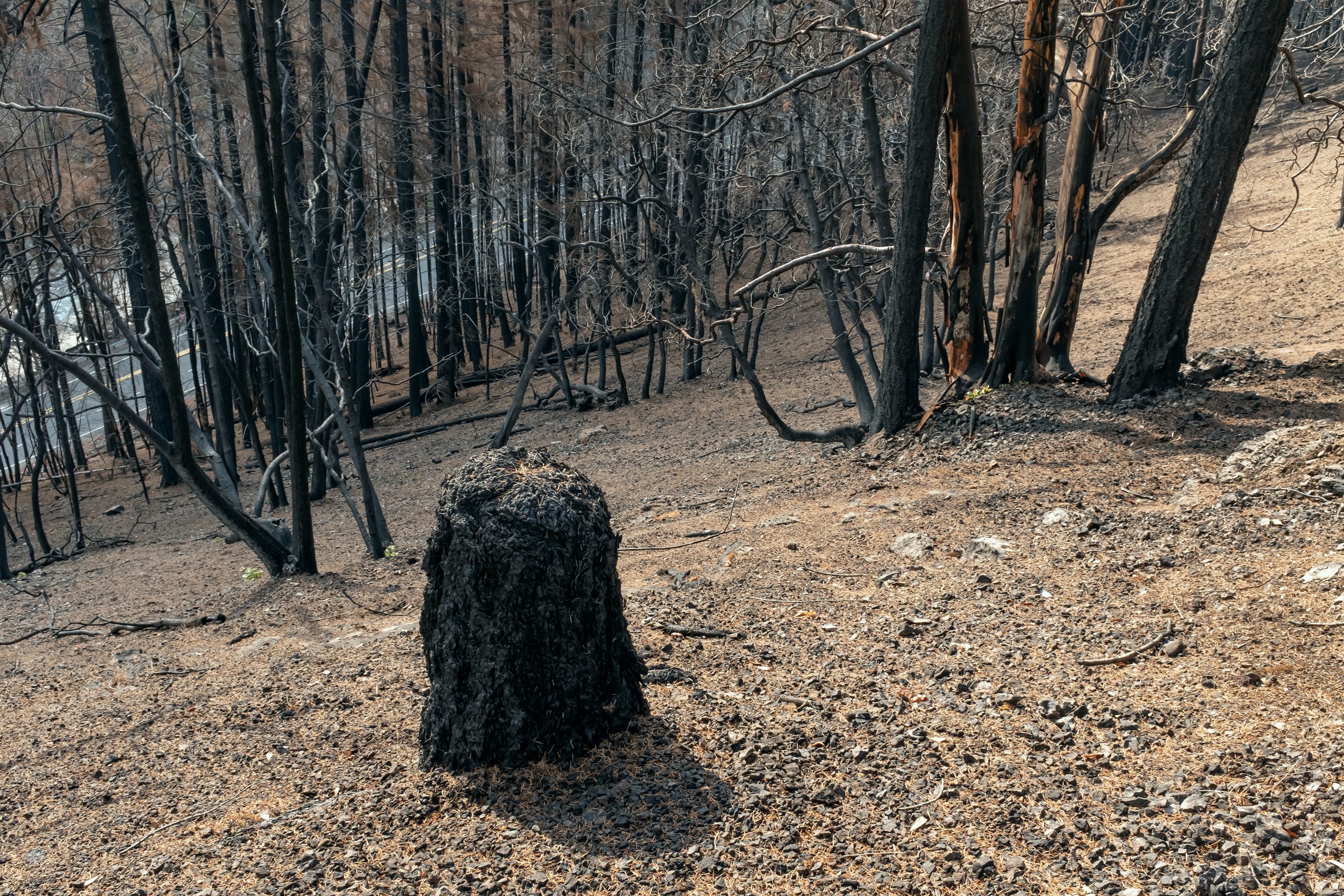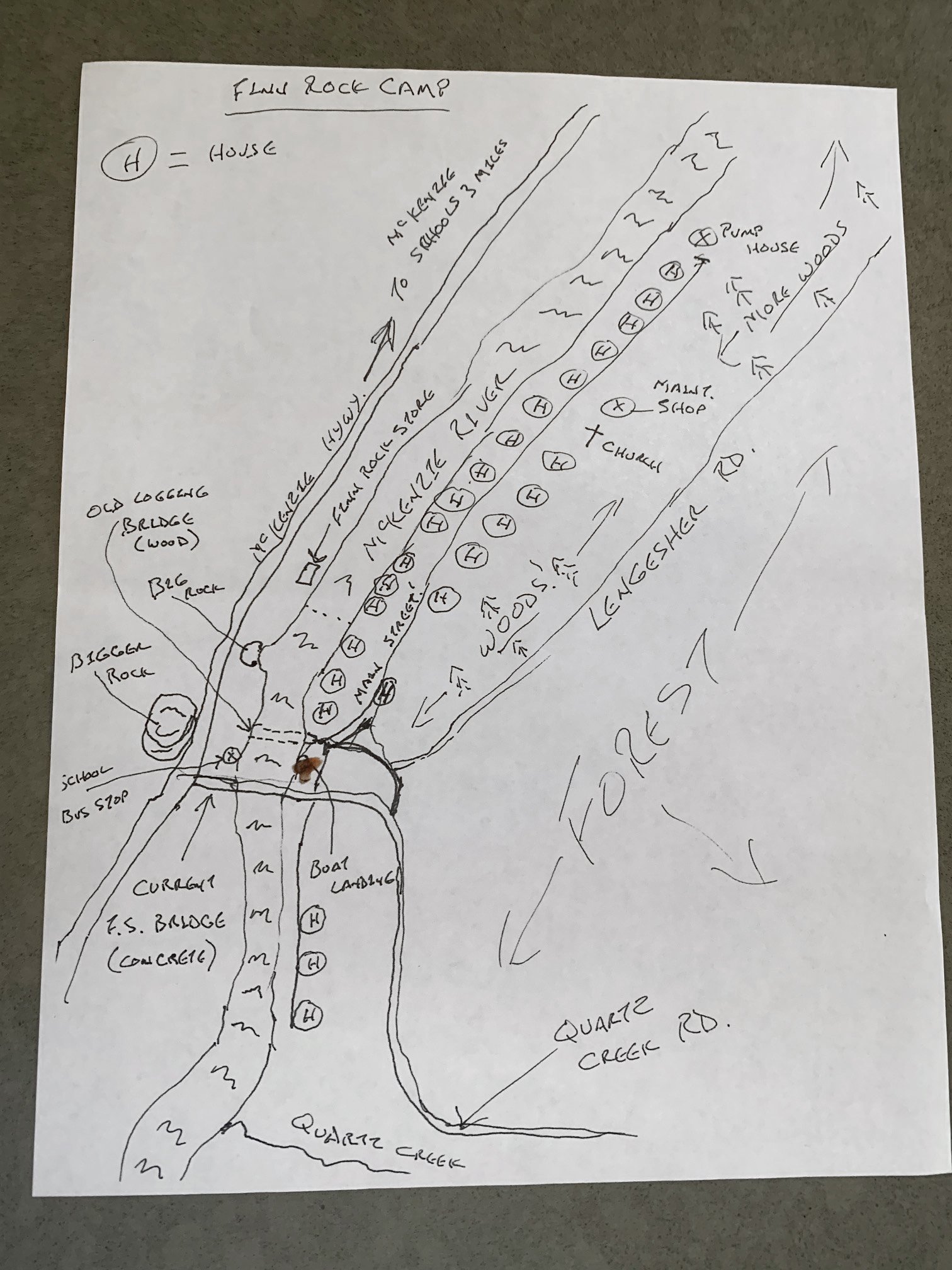CHARRED ABSTRACTIONS
Bark and wood burn very differently. Different species of trees burn differently. Even among the same species, the effects of burning and charring differ by tree age. All this resulted in a surprising variety and abstraction in the marks made by fire.
CANOPY
Conifer trees typically have vertical stems and horizontal branches. During the fire, intense heat rose from the forest floor, drying the needles, leaves, and limbs high in the canopy where fire did not reach. The property of wood differs between the tops and bottoms of limbs to support their load of needles and moisture, so loss of needles and drying of the wood caused conifer branches to curl inward and upward in atypical fashion. The wood properties of hardwood trees are different from that of conifer trees, hence their forms did not respond to the heat in the same way.
STUMP GHOSTS
Huge old-growth stumps are part of the human legacy in these forested landscapes. Some were so massive they did not completely burn, while others had decomposed to a point where they did completely burn, leaving caverns with deep channels describing the path of their root systems. They seemed ghost-like because of their inverse forms describing what once was. The widest of these stumps measured 15 feet across, and the deepest root channel measured nine feet.
SWOOPING TREES
Wildfires are often spread rapidly by winds. They also generate their own windstorm within the fire. These skinny, hardwood trees chose to grow tall as fast as possible to reach light through the canopy of conifers. The spindly stems and weak wood of the hardwoods left them vulnerable to tipping by the fire-driving winds. As they bent and swooped, they thoroughly dried from the heat, retaining their swooping form long after the fire was out.
FUEL ARCHITECTURE
During the initial, raging phase of fire, the understory quickly burned away completely, leaving large pieces of wood standing and on the ground. Wherever two or more pieces of wood touched, more intense, sustained heat caused smoldering to continue for days and even weeks. Eventually enough wood burned away creating space for the fire to cool down and eventually wink out. The result is sculptural evidence of the layered intensity of fire.
BRANCH HOLES
Shown here are 8 of the 17 branch holes that dot the flanks of this one cedar tree from ground to head height. The entire outer form of the tree is intact, while the inner dead wood core of the tree was hollowed out by decay over decades and then by the recent fire. Our theory is that branches close to the ground were lost long ago, facilitating decomposition of wood in the core of the tree. Scar tissue ringed the branch holes, which then provided access for fire to enter the hollow core of the tree, permitting it to function as a chimney. The fire revealed the intricate details of these branch holes.

























































